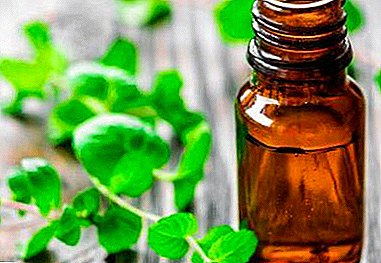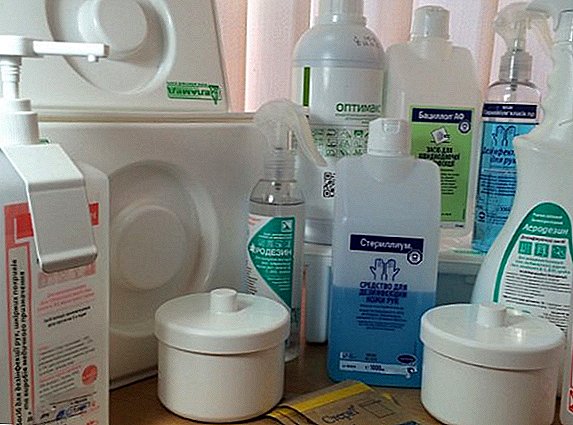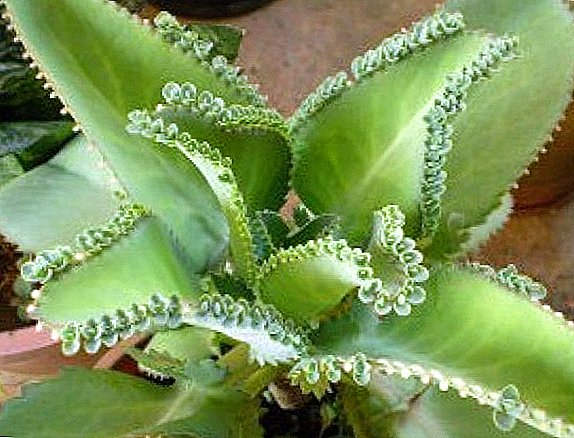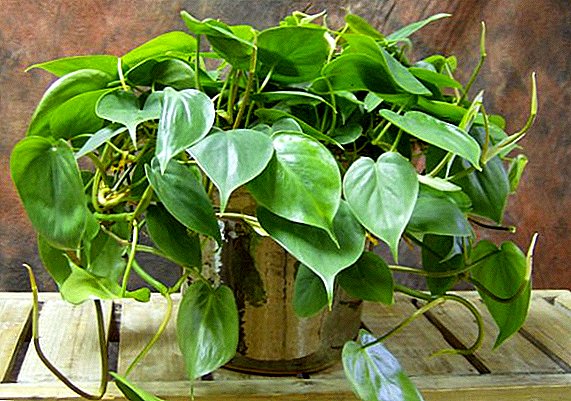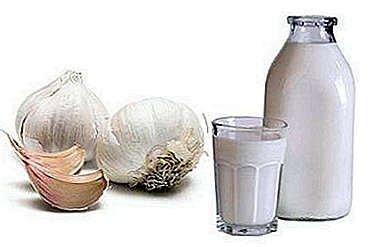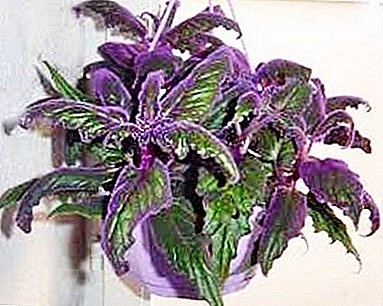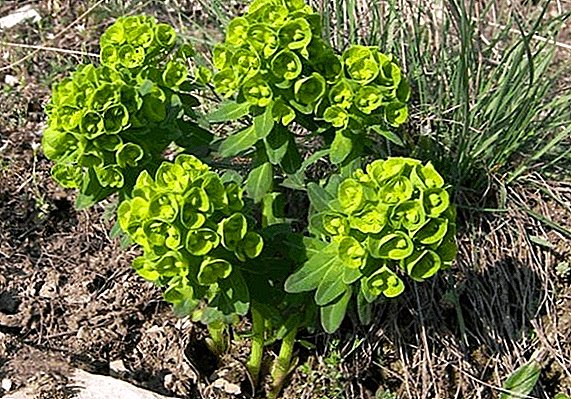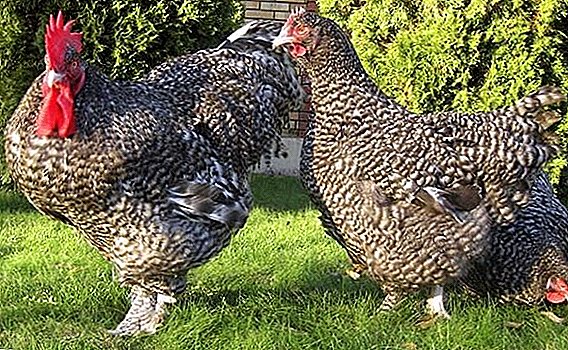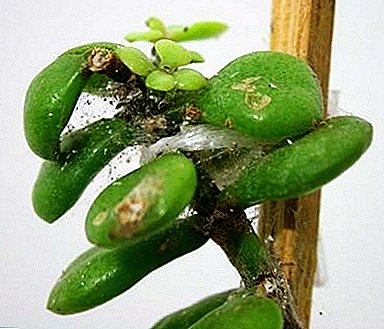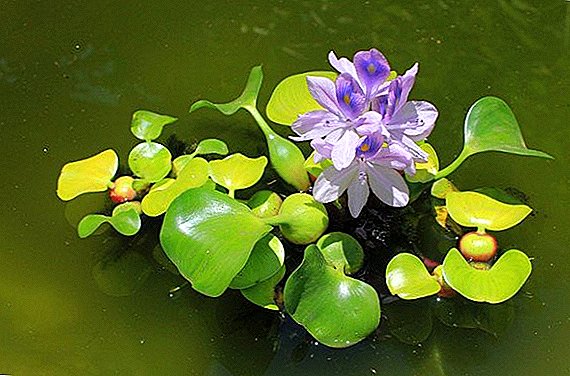
A small pond near the house or a bright aquarium in an apartment will never go out of style. Such things create a special atmosphere and comfort. When fish and shells inhabit the water, this is great, but if you add a couple of interesting flowering plants there, your reservoir will become unusual, special and irresistible. There are many ornamental grasses and flowers for decorating the pond, especially water hyacinth stands out among them. In this article we will talk about his self-planting and further care of such a beautiful plant.
Description
Water hyacinth (Eichhornia crassipes) is an aquatic plant native to tropical regions of South America. He is also called eichornia excellent. The natural environment for the flower are lakes, rivers (with the absence of a strong current), ponds, swamps and even ditches.
Did you know? In America, South Asia and other warm climate countries, hyacinth has been popularly known as the "water plague", as the plant develops very strongly and almost completely covers the rivers due to favorable weather conditions. This is real trouble for the locals.In terms of botany, it is a monocotyledonous plant belonging to the genus Eyhornii. Its petioled leaves are up to 20 centimeters in diameter, have a rounded shape, are collected in a socket in such a way that the hyacinth is always afloat. This is due to the air at the base of the leaf. Its coating is smooth, dense and glossy. The eichornia root system is completely immersed in the aquatic environment and grows to 0.7 meters in length.

The stalk usually reaches 10-15 centimeters in height and gives about 10-15 flowers. In the natural environment, it can grow up to one meter, and in the aquarium the water hyacinth will naturally be much less. Flowers of large size, reaching a diameter of 20-30 millimeters, the gamma can vary from pale pink to deep lilac. Because of the magical look and pleasant fragrant aroma of inflorescences, eihornia is called beautiful. In a European climate, the plant is likely to please with color in the spring-summer season.
You may be interested in such a water flower as Nymphea, which can diversify your home pond.
Features of the form
The view is very unusual and has many differences from other plants living in the water. In suitable conditions, hyacinth grows incredibly fast and covers the entire surface of the reservoir with a dense layer, which creates an obstacle to the passage of ships on the river, for hydroelectric power plants, fishing and other crafts.
Important! Breeding large quantities of eichornia is not recommended because the plant has the ability to braid a reservoir / aquarium so tightly that the air will not get there well, and aquatic creatures, whether fish or algae, cannot exist normally.In some cases, the edges of the eichornia leaves are gentle and wavy, this gives a special aesthetic appearance to the plant. It feels great in warm and calm places. Under the condition of suitable environment, this representative of the flora can turn into an almost constantly flourishing and perennial inhabitant. Water hyacinth is different benefits for the aquarium. Due to its absorber abilities, the plant remarkably purifies water, makes it transparent and removes unpleasant odor. It is able to absorb toxic insecticides, heavy metals, fish waste products and other toxic substances. Many experienced owners of aquariums advise you not to buy an expensive filter, but rather to grow an eichornia. Hyacinth is also good as an organic fertilizer, as it contains many minerals and vitamins.

Features of planting and growing
Eichornia is excellent - it is an incredibly demanding and capricious plant, so it is worth taking a responsible approach to the conditions of its planting and care. Water hyacinth as a decorative species can be grown in a pond or in an aquarium: the specificity of the process depends on the chosen conditions.
In the pond
When growing eichornia in a pond, the main task will be to create conditions that will be close to its natural environment. It is primarily warm, rich in organic matter and vitamins water. It would be good to add humus, prepared bottom sludge or compost. This culture is able to quickly decompose substances; therefore, it does not frighten various harmful means inherent in the pond. That is why you can not clean the reservoir before landing. If there is an opportunity, then water should be chosen with a weak alkaline reaction, but this is not the most important factor. An important condition for growing water hyacinth is the temperature of the water and the environment in general. The fact is that at home culture develops at + 24-30 ° C. The plant loves the sun and requires constant lighting. Planting is worth starting in May and June, so that the hyacinth could settle down and grow to the cold. Moreover, at this time the greatest amount of solar heat and light. Eichornia is excellent and tolerates temperature fluctuations, therefore this indicator should be stable.

In aquarium
The content of eichornia in an aquarium has several features. On the one hand, the temperature is much easier to control, there are a huge number of devices and devices that heat the water in the aquarium, if necessary. On the other hand, there are several difficulties in this type of cultivation. First, the capacity should be far from small, because the plant will develop poorly and may die from lack of space. Secondly, artificial light is needed for hyacinth, and it needs a lot. Experts advise fluorescent lamps with a capacity of 3.2 watts. It will also be good to rearrange the aquarium to the window sill, then your pet will surely bloom in our latitudes.
Breeding
The reproduction of water hyacinth at home is quite possible and easily doable. Experienced botanists say that this process is very similar to the reproduction of well-known strawberries. The plant has daughter processes. This means that eichornia is able to reproduce vegetatively. A similar procedure occurs at an incredibly high rate - more than 100 new plants may appear within a month. As soon as a few leaves have appeared in the daughter process, it can be safely deposited from the main hyacinth.
Did you know? Eichornia is excellent - almost universal flower, suitable not only for water purification and landscape decoration. In countries with a suitable climate, they have recently begun to massively grow hyacinth for consumption as a salad and for the manufacture of fossil fuels.This flower can multiply and seed way. True, there is one thing: the whole thing is that for full ripening of the grains and preparing them for planting a temperature of + 35 ° C is required, so this method is possible, but requires artificial heating at home. Seeds - a longer and less effective form.

Care
When caring for a crop, it is necessary to maintain the desired temperature (from + 24 ° С). In the region of + 10-20 ° C, the plant may not bloom, but it will "live". For eichornia you need a light day lasting about 14 hours.
In the process of growing at home, water hyacinth also requires frequent pruning. Especially forget about it in the aquarium, otherwise the fish will not get along with this plant.
Important! To prevent excessive reproduction of eichhornia, as soon as the plant starts to let horizontal shoots, they must be removed. it need to wear gloves because hyacinth juice may cause allergies and irritation if it comes into contact with skin.Still cut off dead stalks of leaves in the summer. The need for this becomes well noticeable, because they turn into sluggish and become dark unnatural color. The plant is afraid of drafts, so it must be secured in this sense. In order to protect the hyacinth, it is worthwhile to plant a marsh iris or cattail next to it. For this purpose, many vertically growing representatives of the water world are suitable, with the exception of only water lilies.
If a great eichornia breeds too fast, then its bushes need to be constantly made less often so that there is some distance between them. Noticing that the plant has become a bit "inanimate", as soon as possible, provide it with additional light and oxygen. 
Wintering
Water hyacinth is very light and heat-loving, so wintering for him becomes a huge stress. During this period, he needs special care and attention, which consists in the following actions:
- when the temperature drops below + 15 ° C, the plant from the pond must be placed in a container with “native” water and brought into the room;
- provide additional light (minimum 10 hours per day);
- monitor the stable temperature of the water, which should be above + 20 ° С;
- control the supply of sufficient oxygen;
- protect the plant from drafts;
- place the hyacinth on the ring float;
- humidify the air in the room;
- fertilize the plant, as in the cold time minerals are especially important.
The container with aihorniya should be located at the maximum possible distance from the heating system to avoid drying out. Do not cover the container with the plant or remove it from the water. It is deadly for eichornia.
Follow these rules, and with the onset of a warm pore, the water hyacinth can again be landed in a flowering pond.
You will also be interested to learn about the cultivation of mouse hyacinth.
Application in landscape design
That’s beautiful and beautiful, to be widely used to create gorgeous landscapes. This reminder of warm America and the tropics is common in landscape design of all countries of the world. Delicate color and cute sheets of hyacinth in the pond will be an excellent addition to the garden. In an aquarium, the plant will turn into a colorful spot, which will be in harmony with colorful fish and shells. The main thing is to constantly monitor this inhabitant of your reservoir and limit it in growth so that the hyacinth will not become too much. Let eichornia excellent become a useful plant and please your eye!


